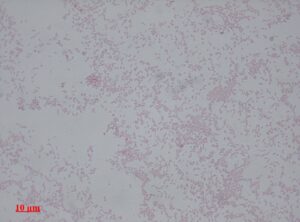Summary
According to Greek mythology, Proteus was an ancient sea god known for his ability to change its shape. This reference reflects the bacterial ability to form pleomorphic colonies [1]. "Mirabilis" is a Latin word meaning "wonderful" or "miraculous," referring to several unique properties of the bacterium.
Proteus Mirabilis
According to Greek mythology, Proteus was an ancient sea god known for his ability to change its shape. This reference reflects the bacterial ability to form pleomorphic colonies [1]. “Mirabilis” is a Latin word meaning “wonderful” or “miraculous,” referring to several unique properties of the bacterium.
Staining and Microbiological Features:
- Facultative anaerobic bacilli that are gram-negative [2]
Proteus mirabilis” by Dr. Sahay is licensed under CC BY-SA 3.0.
- It tests positive for urease (i.e., it can produce NH3 and CO2 from urea) [3].
- It is a non lactose fermenting organism and tests negative for indole [3].
Virulence:
- Fimbriae and Pili allow the organism to attach to urothelial cells lining the urinary tract.
- Swift-swarming motility can be advantageous for invading the urinary tract [4].
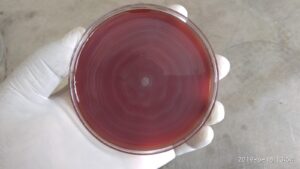
Swarming growth of Proteus on blood agar” by Ajay Kumar Chaurasiya is licensed under CC BY-SA 4.0
- Some other virulence factors include hemolysins and proteases.
Diseases and Complications:
- Urinary Tract Infections: Proteus Mirabilis can result in urinary tract infections such as cystitis and pyelonephritis [5]. Urease, an enzyme produced by Proteus Mirabilis, generates ammonia from urea. Therefore, patients with Proteus mirabilis infection have high urinary pH [6].
- Renal Stones: Alkaline pH also promotes the precipitation of calcium and magnesium and can lead to struvite stones. Imaging studies will reveal staghorn calculi, and the crystals have a coffin lid appearance [7].
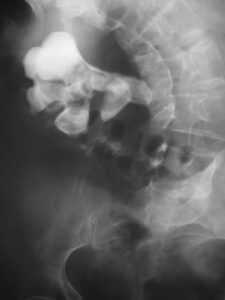
File:Staghorn Kidney Stone 08779.jpg” by Nevit Dilmen (talk) is licensed under CC BY-SA 3.0.
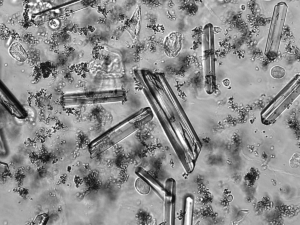
Struvite crystals (urine) – Strüvit kristalleri (idrar) – 02” by Doruk Salancı is licensed under CC BY-SA 3.0.
Diagnostic Testing:
- Culture: The culture of the obtained specimen will show swarming colonies on the agar plates [6].
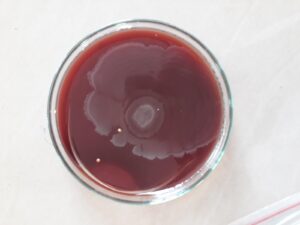
Proteus mirabilis on agar” by Dr P V Sriram is licensed under CC BY-SA 4.0.
- High urine pH on urinalysis [6].
- Some other tests include PCR and gram staining.
- Weil-Felix Test: This test relies on detecting antibodies in a patient’s blood that react with surface antigens of certain Proteus species. Some antigens of Proteus Mirabilis, such as OX-19, OX-2, and OX-K, share some cross-reactivity with antigens of Rickettsia. Positive reactions in the test could indicate exposure to either Rickettsia or the specific Proteus species used [6,8].
References:
1 Medical Microbiology by Patrick R. Murray Ph.D., Ken Rosenthal Ph.D., Michael A. Pfaller MD, 8th edition (page no: 253)
2 Jawetz, Melnick, & Adelberg’s Medical Microbiology Twenty-Seventh Edition (page no: 50)
3 CMMRS edition 6, 2016-17 (page no: 84)
4 Jawetz, Melnick, & Adelberg’s Medical Microbiology Twenty-Seventh Edition (page no: 236)
5 Medical Microbiology by Patrick R. Murray Ph.D., Ken Rosenthal Ph.D., Michael A. Pfaller MD, 8th edition (page no: 262)
6 CMMRS edition 6, 2016-17 (page no: 85)
7 First Aid for USMLE step 1, 2021 edition (page no: 622)
8 CMMRS edition 6, 2016-17 (page no: 75)


